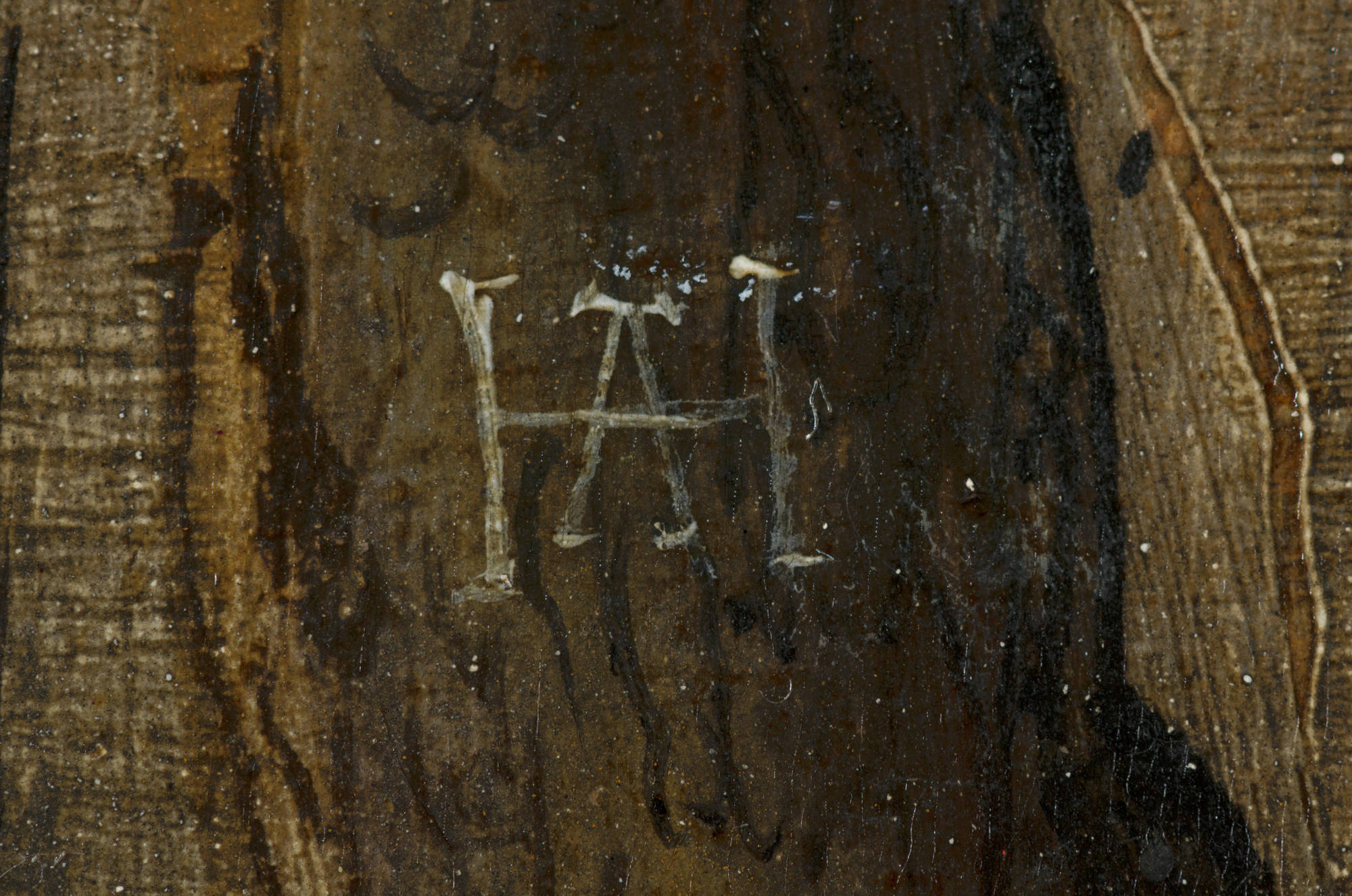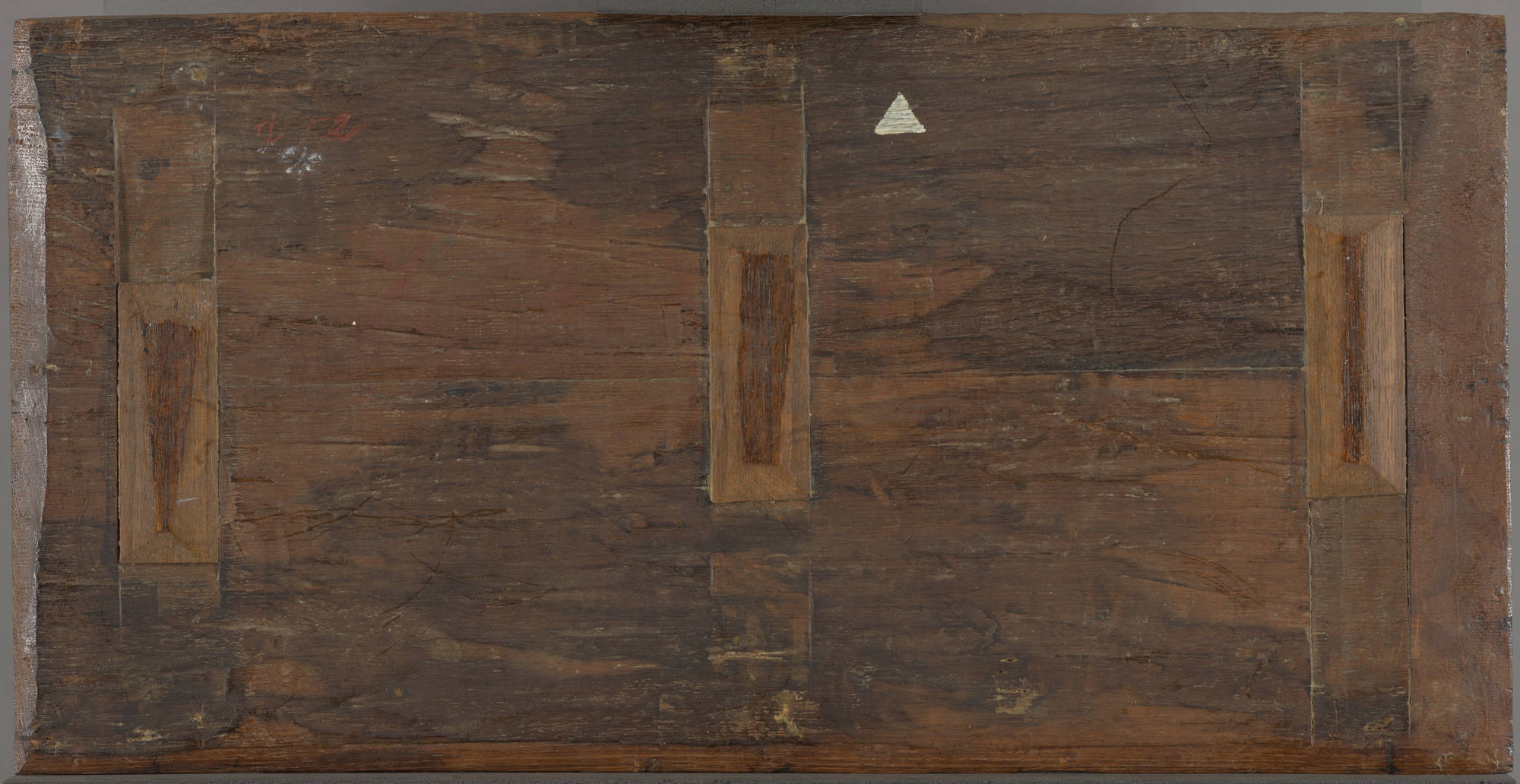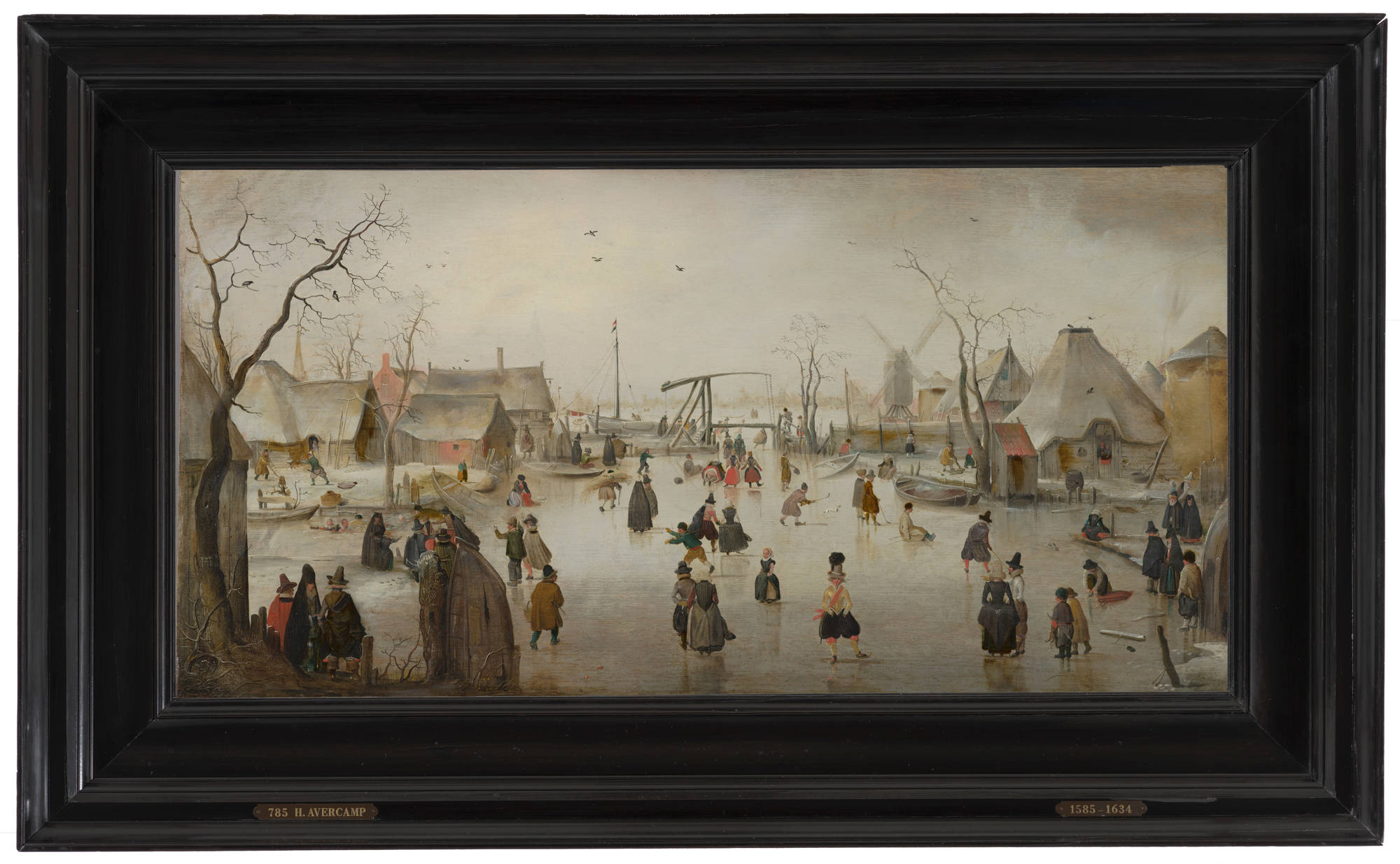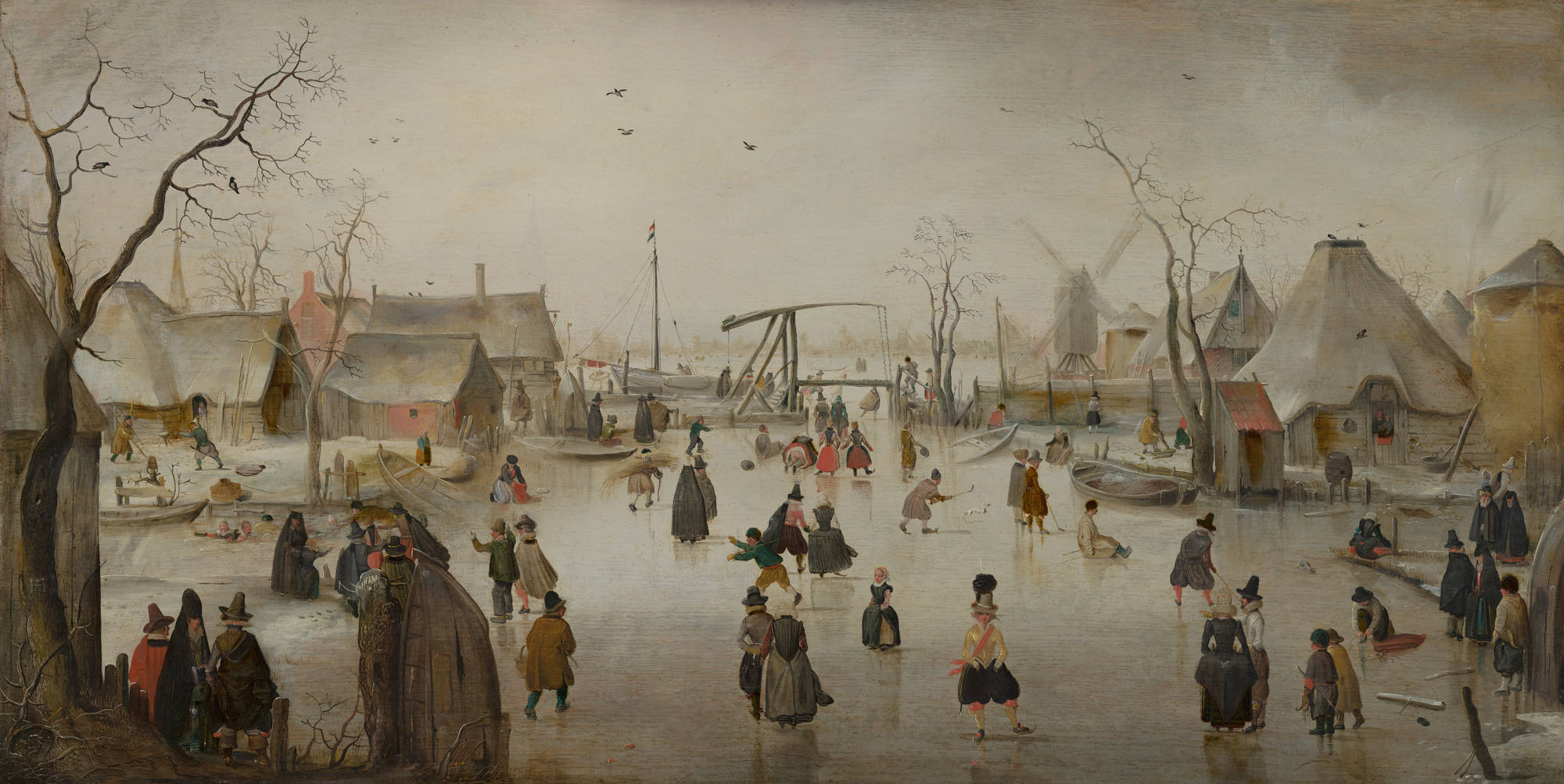A frozen canal in a peasant village beneath grey skies is the setting for this wintry scene by Hendrick Avercamp, the first artist to specialize in drawing and painting the typically Dutch genre of people enjoying themselves on the ice. With great feeling for anecdotal detail he has painted numerous little figures, whose meticulously rendered clothing shows them to be from all sections of society. In the foreground our attention is drawn to a smartly dressed skater with a plumed top hat. Couples glide over the ice hand in hand, a game of kolf – a precursor of ice hockey – is in progress, a woman is doing her washing in a hole in the ice near a half-submerged rowing boat, and a man is chopping wood on the bank to the right. The bare buttocks exposed under the skirts of the woman who has slipped on the ice provide an amusing detail. But Avercamp also has an eye to the dangers of this winter recreation: four people have fallen through the ice near the left bank. Others are coming to their aid with a ladder. The lift bridge marks the transition to the expansive ice scene stretching into the distance, where the silhouette of a city stands out against the horizon.
This painting by the ‘Mute from Kampen’ was probably produced in a bout 1610, when we may assume that the deaf painter had returned to his home town of Kampen after undergoing training in Amsterdam. It still displays the influence of the Flemish landscape tradition, which had evolved in Antwerp starting with Pieter Bruegel the Elder (1520/25-1569) and enjoyed its last florescence in the northern Netherlands – especially in Amsterdam – after the arrival of Flemish immigrants around 1600. Characteristic features include the tall, decorative tree and the rowing boat used as a privy, both of which serve as a repoussoir, the stage-like structure, the many colourful details, and the anecdotal nature of the scene. The theme of a winter landscape with people enjoying themselves on the ice has its origins in the sixteenth-century Flemish tradition of depicting months and seasons.
The popularity of winter landscapes in seventeenth-century painting was partly attributable to the climate. From about 1550 to 1850 the whole of northwest Europe passed through the Little Ice Age, a period of extremely cold winters and relatively cool summers. In the Netherlands, two-thirds of the winters between 1600 and 1700 ranged from ‘cold’ to ‘very severe’. In these winters the country endured long periods of frost and snow, during which time a thick layer of ice on Holland’s inland waterways made navigation impossible and brought part of public life to a standstill. The severest winters occurred between 1600 and 1625, which was when Avercamp produced his wintry landscapes. Landscape painters, who set out to produce realistic images of their country, obviously depicted these freezing conditions. Snow and ice have a dramatic effect on the light effects and colours of a landscape, and artists saw it as a challenge to depict the light, sky and atmosphere convincingly.
(this is a reworked version of a text published in in: P. van der Ploeg, Q. Buvelot, Royal Picture Gallery Mauritshuis: A princely collection, The Hague 2005, pp. 208-210)









